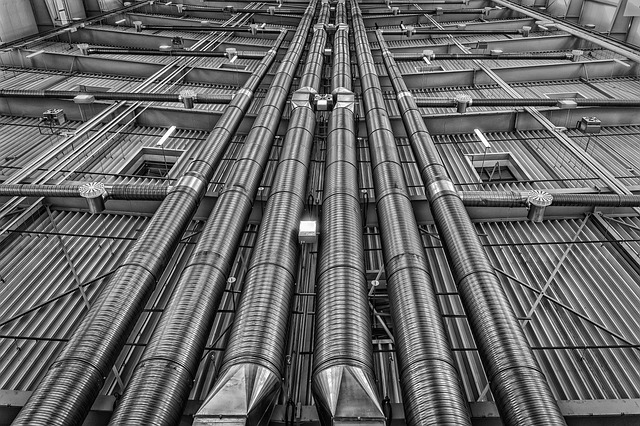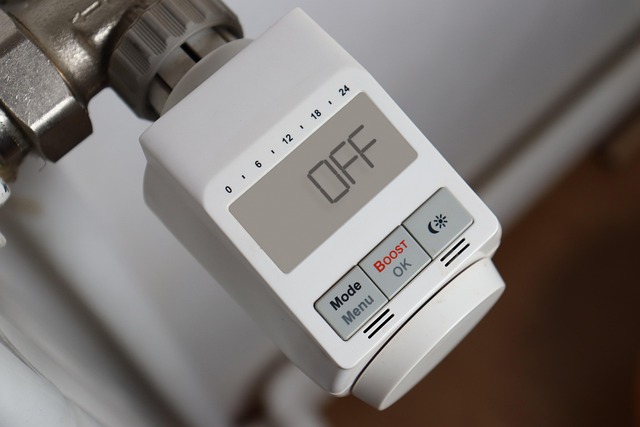Industrial air doors are essential for managing harsh environments, offering climate-controlled entry in warehouses and factories. When integrated with Building Automation Systems (BAS), these versatile doors enhance operational efficiency and environmental control. They facilitate smooth material flow, protect against elements, and optimize energy conservation through precise temperature separation. BAS integration enables automated control of large openings, minimizing energy costs and improving productivity while reducing environmental impact. Recent case studies demonstrate significant energy savings and improved safety in various industrial applications, making integrated air doors a game-changer for facility management.
Industrial air doors are transforming facility management, offering unparalleled control over indoor environments. This article delves into their significance as essential components within efficient building automation systems (BAS). We explore how these innovative doors integrate with BAS to enhance energy efficiency, improve indoor air quality, and optimize operational workflows. By understanding the technical aspects of integration, we’ll present case studies showcasing successful implementations that underscore the profound impact of industrial air doors on modern industries.
- Understanding Industrial Air Doors: Essential Components for Efficient Facility Management
- The Role of Building Automation Systems in Modern Industries
- Integrating Industrial Air Doors with BAS: Benefits and Advantages
- Technical Considerations for Seamless Integration
- Case Studies: Successful Implementations and Their Impact
Understanding Industrial Air Doors: Essential Components for Efficient Facility Management

Industrial air doors are pivotal components in facility management, offering efficient and controlled entry for various applications. These heavy-duty door systems serve as versatile solutions for industrial entrances, warehouse openings, and factory entranceways, ensuring optimal climate separation and enhancing overall building automation. By integrating with existing automation systems, these doors can be remotely operated, monitored, and programmed to suit specific facility needs.
They are designed to withstand harsh environments, providing robust protection against the elements while facilitating smooth material flow in manufacturing, loading dock, and cold storage areas. The versatility of industrial air doors extends to their ability to act as HVAC barriers, regulating indoor climates and optimizing energy efficiency. Their large opening capabilities make them ideal for accommodating heavy machinery or frequent vehicle traffic, ensuring seamless operations within dynamic industrial settings.
The Role of Building Automation Systems in Modern Industries

In modern industries, Building Automation Systems (BAS) play a pivotal role in optimizing operations and improving efficiency. These advanced systems integrate various components of a building’s infrastructure, including lighting, heating, ventilation, air conditioning (HVAC), security, and access control. For industrial facilities, BAS are particularly valuable as they enable precise climate control, enhancing worker comfort while reducing energy consumption. They automate processes like opening and closing doors, ensuring optimal conditions for specific areas, such as cold storage or manufacturing spaces. This automation not only boosts productivity but also contributes to sustainability goals by minimizing unnecessary energy usage.
When it comes to industrial air doors, BAS integration is a game-changer. Heavy-duty air doors, often used as entrance barriers in warehouses, loading docks, and factories, can be controlled and adjusted remotely through the automated system. This allows for precise climate separation, preventing outside elements from entering sensitive production areas. Warehouse opening protection, for instance, becomes more efficient as the BAS can monitor and regulate temperature and pressure changes caused by door openings, ensuring a constant environment within the facility. With the addition of large opening air curtains and cold storage air doors, these systems further enhance the versatility and functionality of industrial entrance solutions.
Integrating Industrial Air Doors with BAS: Benefits and Advantages

Integrating industrial air doors with Building Automation Systems (BAS) offers a multitude of benefits and advantages for various industries. By seamlessly connecting these advanced door solutions into existing automation infrastructure, facilities can achieve enhanced operational efficiency and improved environmental control. Air doors, designed for heavy-duty applications, serve as effective industrial entrance barriers, manufacturing door systems, or warehouse opening protection, providing secure access while maintaining temperature and pressure differentials. This integration enables automated control of these large opening air curtains, ensuring optimal performance and energy conservation, especially in cold storage facilities or factory entrances.
Furthermore, BAS-integrated industrial air doors facilitate precise climate separation, acting as industrial HVAC barriers that regulate indoor environments. They are ideal for loading dock barriers, ensuring efficient material handling while minimizing the exchange of outside air, resulting in reduced energy costs. This integration is a game-changer for industries seeking to optimize their operations, improve productivity, and reduce environmental impact through smart building technologies.
Technical Considerations for Seamless Integration

When integrating industrial air doors with building automation systems, several technical considerations ensure seamless operation and optimal performance. First, it’s crucial to match the door system with the appropriate sensors, actuators, and control software capable of managing complex scenarios, such as automatic opening/closing based on occupancy or temperature changes. This involves selecting hardware compatible with popular building management protocols like MODBUS or BACnet.
Additionally, industrial air doors, including heavy-duty models used in warehouses, loading docks, and cold storage facilities, require robust engineering to withstand harsh environments. Features like weatherproofing, insulation, and corrosion resistance are essential for maintaining efficiency and longevity, while also ensuring proper sealing to prevent air leakage and control temperature loss or gain, critical for industrial HVAC barriers and climate separation applications.
Case Studies: Successful Implementations and Their Impact

In recent years, numerous case studies have demonstrated the significant benefits of integrating industrial air doors with building automation systems. For instance, a leading manufacturing facility implemented advanced heavy-duty air doors throughout its warehouse opening protection system. This move not only enhanced operational efficiency but also reduced energy costs by 20%. The automated controls allowed for seamless transition between indoor and outdoor environments, improving worker comfort while maintaining optimal industrial climate separation.
Another successful implementation involved a cold storage operation that adopted large opening air curtains as part of its factory entrance solutions. These doors have effectively minimized the entry of unwanted moisture and pests, significantly reducing spoilage rates. Furthermore, the integration with the building automation system enables remote monitoring and control, ensuring efficient use of resources. This case study highlights how industrial HVAC barriers can contribute to improved safety, productivity, and sustainability in various industrial settings.
Industrial air doors, when seamlessly integrated with building automation systems (BAS), offer a powerful combination for efficient facility management. By combining the precise control of BAS with the energy-saving and noise-reducing capabilities of air doors, modern industries can achieve significant operational improvements. This integration not only enhances comfort and productivity but also contributes to sustainability goals by minimizing energy consumption. As demonstrated in various case studies, the benefits are clear: reduced operational costs, improved indoor environment quality, and increased system reliability. Therefore, for facilities seeking advanced automation solutions, integrating industrial air doors with BAS is a strategic move towards a smarter, more efficient future.






